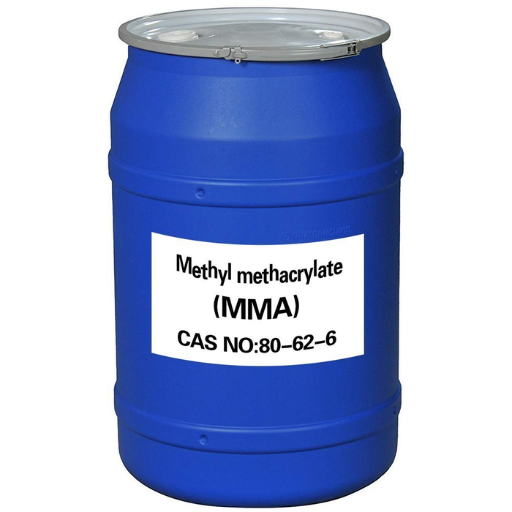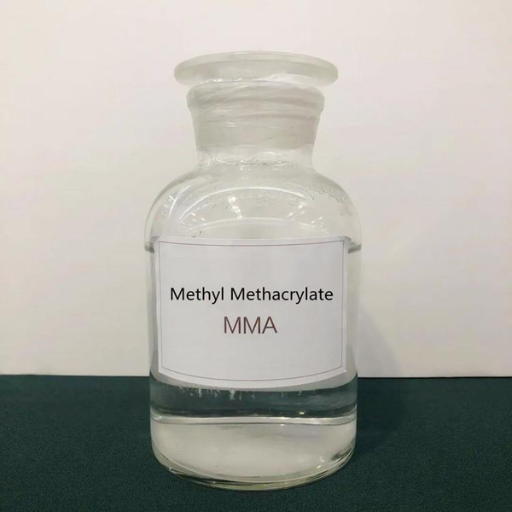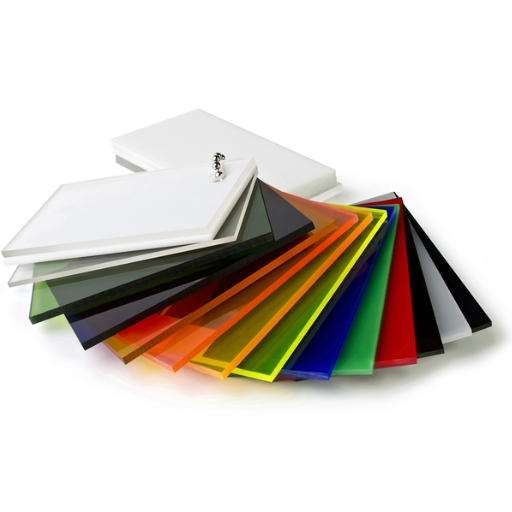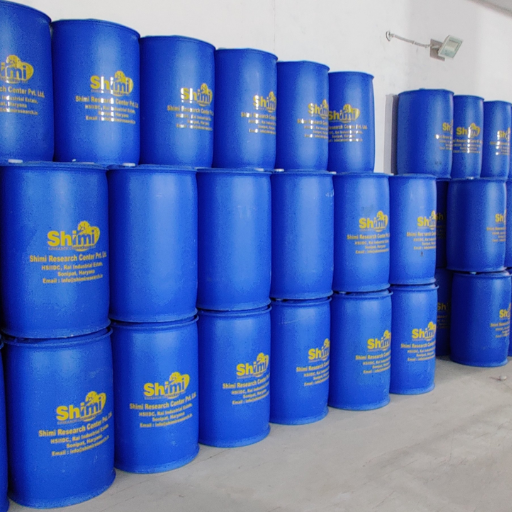Methyl methacrylate (MMA) is a commonly used substance in modern dentistry that is valued for its adaptability and efficiency for different purposes. It has become an indispensable material in dentistry, being involved in making dental bridges, veneers, removable dentures and orthodontic appliances among others. The objective of this article is to give a broad understanding of MMA by highlighting its main uses, reviewing its safety and discussing potential exposures of dental professional and patients. Thus we can understand the importance of MMA in dentistry as well as ensure that there are appropriate ways to safeguard it.
What is methyl methacrylate and How is it Used in Dental Procedures?

Image source: https://www.indiamart.com/
Methyl methacrylate (MMA) may also be described as transparent or colorless liquid monomer that solidifies into polymethyl methacrylate (PMMA), which is robust and biocompatible. In most dental operations, this monomer is mainly used when manufacturing dentures, other prostheses or braces. After mixing the monomer with polymer powder, a dough-like consistency occurs which can be moulded into various dental devices then hardened through curing processes. Due to these reasons MMA became the preferred choice of dental students because it had excellent adhesion properties with other dental materials and also was easily handled during manipulation.
Understanding PMMA and Its Role in Dentistry
A synthetic resin, polymethyl methacrylate (PMMA) is produced by polymerication of methyl methacrylate. It’s a highly adaptable and bio-friendly material extensively applied to dentistry for its strength, pleasing aesthetics and ease of handling. In the production of dentures, PMMA acts as the primary material and it looks just like a natural gum or teeth. Apart from that, PMMA is used in making dental crowns, bridges and other intraoral appliances due to its stability as well as resistance to corrosion. The excellent optical properties of this material enable dental restorations to have the most natural appearance thereby increasing patient’s satisfaction. As such, this substance has found extensive use among practitioners since it could easily be polished and maintained.
Common Dental Applications of PMMA
Due to its toughness, polymethyl methacrylate (PMMA) is used in many crucial dental procedures with ease of adaption. One example is the manufacture of full and partial dentures which offer a long-lasting aesthetic replacement for lost teeth. This makes the dentures more attractive aesthetically by enabling them to be colored like gums that are natural.
Another key use of PMMA is in making dental crowns and bridges. As temporary or permanent solutions, PMMA can either be used as intermediate restorative materials before the final material is applied if necessary. Besides this, it also helps produce some intraoral devices including retainers, night guards and provisionals. They gain from the convenience of shaping and personalizing with PMMA, ensuring their snugness and exactitude on patients’ mouths. It is highly biocompatible and highly resistant to daily wear; hence it’s widely preferred in dentistry circles.
Acrylic Resins vs. Polymethyl Methacrylate in Dental Materials
When comparing acrylic resins with polymethyl methacrylate (PMMA) in dental materials, both substances are found to have their own unique advantages and specific applications. Acrylic resins, which include PMMA as one of such materials, can be molded easily; they are also flexible enough to allow for the use of various different dental techniques like snap-fit connections and ’wingless’ denture base systems. However, on the other hand, it is made up mainly of methyl methacrylate monomer units and is thus often referred to as PMMA or simply acrylic resin. This includes examples such as transparent tubes where poor visibility will lead to accidents or loss acceptable tinted shields that give poor vision through them.
On the contrary, it has a combination of exceptional clarity, durability and biocompatibility. It could also be used when designing crowns that would look as natural as possible or when shaping full bridges with high aesthetic appeal demands . Furthermore, its easy-to-clean nature adds on top of all these qualities which makes it even more popular. Both materials have important roles in restorative dentistry resulting in various prosthetic appliances including complete dentures. However, PMMA continues to be used over the former for functional purposes whenever both aesthetics and longevity are paramount considerations.
What are the Health Concerns for Dental Technicians Exposed to Methyl Methacrylate?

The dental technicians may experience various health issues from working with methyl methacrylate (MMA) for a long time. Firstly, inhaling the MMA vapors can cause respiratory tract irritation, which would manifest in coughing, shortness of breath and throat irritation. Prolonged or repeated contact can lead to severe respiratory diseases such as asthma. Moreover, coming into contact with MMA through skin exposure can result in dermatitis characterized by redness, itching and blistering. A few people might be allergic to MMA, meaning that they will experience symptoms even after only a little bit of it. Proper ventilation; use of personal protective equipment and adherence to safety procedures are essential to minimize these hazards and create safe working conditions for dental technicians.
Potential Toxicity of MMA Monomer
MMA monomer, a principal constituent in several dental supplies has been linked to many poisonous effects. Breathing MMA’s fumes can cause problems with the lungs such as inflammation and irritation of the respiratory tract. Moreover, prolonged contact may worsen into more serious conditions like asthma. Furthermore, MMA touching naked skin causes it to itch or to become red and swollen (irritation) while its entry into an eye results in a pain and swelling. In order to avoid these dangerous situations strict safety measures need be followed; among them are ventilation, proper use of personal protective equipment, observing safe handling procedures.
Safety Measures for Dental Staff Working with PMMA
To make sure that members of staff at a dental practice working with polymethyl methacrylate (PMMA) are safe, there are some measures to be considered:
- Proper Ventilation: Workspaces should have good air circulation in order to avoid the accumulation of PMMA fumes. One way of achieving this is through use of local exhaust ventilation systems which will absorb vapors from their source.
- Personal Protective Equipment (PPE): Dental personnel must put on gloves, masks and eye protection equipment among others so as to minimize direct contact with PMMA and thereby avoid inhaling harmful fumes emanating from it.
- Safe Handling Protocols: Follow recommended safety regulations for handling and storing PMMA materials such as labeling containers well, mixing them appropriately for the manufacturers’ instructions as well as disposing off waste materials correctly.
- Emergency Preparedness: Safety showers and eyewash stations should be made available in case anyone accidentally comes into contact with any chemical or hazardous material. The staff should be trained concerning the correct usage of these emergency facilities.
- Routine Health Monitoring: Periodic health check-ups for dental employees can help detect symptoms associated with PMMA exposure like skin problems or respiratory tract disorders and treat them early enough thus avoiding permanent disability.
In conclusion, these safety precautions would significantly reduce the health risks of working with PMMA in dentistry thereby creating an atmosphere where dentists feel safe while attending to their patients.
How Do International Dental Standards Regulate the Use of Methyl Methacrylate?

International standards for dentistry are mandated by international dentist (MMA) guidelines which provide a comprehensive approach that aims at the safety and health of both dental professionals and patients. International Organization for Standardization (ISO) and American Dental Association (ADA) are some of the organization with specific standers to do with MMA handling, storage, and disposal. Among these requirements include mandatory utilization of personal protective equipments (PPE), good ventilation system, as well as ensuring strict adherence to safety protocols. They also insist on staff training programs about the dangers attached to methacrylate use and emergency readiness due to accidental exposure. Adherence to these global standards helps in minimizing harmful exposures while promoting safer working environment within the dental facilities worldwide.
Denture Base Material Regulations
The current top websites confirm that the denture base materials regulations including PMMA have a tendency of focusing on the stringent safety measures to safeguard both dental practitioners and their patients. ISO 20795-1:2013 provides requirements for denture base polymers like PMMA thereby ensuring they are biocompatible, meet mechanical property standards and are subjected to cytotoxicity, sensitization and genotoxicity test protocols. ADA Specification No. 12 also outlines denture base materials’ standards such as physical and chemical properties specifications, as well as guidelines for safe practice. More so, European Dental Standard EN1641 sets out complete requirements regarding biological evaluation of dental medical devices used in order to ensure safety and effectiveness. Complying with these rules will make denture-based materials employed by dental practices risk-free thus minimizing related risks associated with them.
Guidelines for Dental Laboratories Handling Methyl Methacrylate
The guidelines for handling of methyl methacrylate (MMA) in dental laboratories are intended to ensure the safety and well-being of technicians as well as dental professionals.Here are some best practices:
- Personal Protective Equipment (PPE): Gloves, laboratory coats, and safety glasses should be worn by dental laboratory personnel to minimise skin contact and protect against splashes.
- Ventilation Systems: It is important that there be adequate ventilation in areas where MMA is used. To enable the effective removal of noxious fumes from the work environment, fume hoods, local exhaust ventilation or air filtration systems should be installed.
- Training Programs: Facilities must inform their staff about the dangers of being exposed to MMA and educate them on how to safely handle it. Formal training programs should incorporate potential health hazards, proper PPE utilization, what actions need to be taken during emergencies as well as appropriate ways of disposing off materials.
- Storage and Handling: In a cool place away from ignition sources, tightly closed with labels; containers in which MMA is stored. Procedures must prevent spillages or accidental release into workplaces during handling.
- Emergency Preparedness: When an exposure accidentally occurs or spills happen within laboratories there should be emergency steps already put in place. These shall include eyewash stations that are accessible plus safety showers besides first aid kits.
By adhering to these suggestions dental labs will have maintained a safe working atmosphere that reduces possibilities of MMA exposure while safeguarding dentists’ health.
What are the Common Applications of PMMA-Based Dental Materials?

PMMA-based dental materials have a wide application as they are versatile, resistant to wear and biocompatible. Below are some of the common applications:
- Dentures: PMMA is often used in complete denture manufacture and partial denture fabrication resulting in natural look and well-fitting restorations.
- Crowns and Bridges: For easy handling and faster processing, temporary crowns and bridges are usually made using PMMA.
- Orthodontic Appliances: Strength and clarity make PMMA an ideal material for orthodontic retainers among other removable appliances.
- Dental Implants: In implant dentistry, PMMA acts as a temporary abutment or provisional restoration material.
- Restorative Fillings: Some composite resins for dental restorations contain PMMA which gives them good aesthetics with high wear resistance.
These applications show how critical PMMA is in today’s modern dental practice.
Usage of PMMA in Denture Base Fabrication
Polymethyl methacrylate, known as PMMA, is widely used in making the frameworks of dentures because of its numerous benefits. Firstly, PMMA is ideal for patients’ mouths due to its excellent bio-compatibility. Its esthetic power allows for the fabrication of natural looking dentures with variations in shades and translucencies that match with natural teeth and gums. Furthermore, PMMA is durable and resistant to oral conditions which guarantees a long lasting and reliable use for denture purposes. On top of that, it shows good handling properties enabling dental technologists to shape it easily while molding or processing it towards getting accurate snugness on each patient’s mouth. The adaptability of these qualities makes PMMA a good material to use in making complete dentures.
Innovations and Improvements in PMMA Resin Mechanical Properties
In recent years, changes in PMMA resin have focused on the improvement of mechanical properties to better suit modern dental and medical applications. Enhancements are mainly developed towards improving material strength, toughness, and fracture resistance. These progressions include the use of nano-fillers and fiber reinforcement, which greatly increase durability and structural integrity of PMMA as established by leading sources. Furthermore, breakthroughs in polymerization techniques have yielded high molecular weight PMMA with superior mechanical performance. The new cross-linking agents also make the polymeric network more tough and resilient. These modifications in combination enhance longevity of PMMA-based devices for different therapeutic uses in health care.
Dental Composites Incorporating Polymer Technology
Polymer technology has revolutionized the production of dental composites and this has led to materials with better aesthetics, enhanced durability and biocompatibility. Dental composites that are used today mainly consist of methacrylate-based resins such as Bis-GMA, UDMA, and TEGDMA which have a good handling properties making it possible for dentists to make restorations that resemble natural teeth (Mitra, 2009). The incorporation nano-fillers into these polymer matrices have improved the mechanical strength, wear resistance and translucency of the composites thus resulting in durable and aesthetically pleasing dental restorations.
Polymer systems’ advancements have resulted in bulk-fill composites that can be placed in larger increments during restoration procedures thereby reducing shrinkage stress and saving chair time. Further enhancements in light-curing technologies ensure complete polymerization of these materials thereby enhancing their clinical performance characteristics as well as longevity. Clearly, incorporation of advanced polymer technology in dental composites is a giant stride in facilitating the fabrication of better dental restorations meeting the dynamic needs of both patients and dentists.
How is Residual Methyl Methacrylate Managed in Dental Practices?

A combination of advanced materials and procedural strategies is used to manage residual methyl methacrylate (MMA) in dental practices. Meticulous techniques are employed by dental practitioners during the mixing and handling stages to minimize exposure to MMA. Newer dental composites have lower residual monomer levels, which reduce the risks than could be associated with them. This means that advanced suction systems and proper ventilation in practice settings can be instrumental in reducing airborne MMA. Modern polymer systems have been designed for maximal polymerization so as to ensure near-complete conversion of MMA thereby lowering the amount remaining afterwards. Lastly, adherence to safety guidelines and use of Personal Protective Equipment (PPE) like gloves and masks are essential in managing exposure to MMA effectively.
Minimizing Residual Monomer Content in Dental Resin Products
To lessen the amount of remaining monomer in dental resin products, manufacturers have turned their attention towards ameliorating resin formulations and polymerization processes. By using more advanced chemistry in monomer design, improved cross-linking and higher molecular weights can be achieved; this leads to lower levels of residual monomers. Apart from that, thiols are extremely efficient photoinitiators and curing systems for a more complete resin polymerization. Moreover, quality control measures like strict testing protocols on monomer conversion rates help confirm that the final products meet safety as well as performance standards. In totality, these methods assist in generating dental resins with minimal amounts of residual monomers thereby enhancing safety and effectiveness during dental restorations.
Testing for Methyl Methacrylate Monomer and PMMA Denture Base Material Integrity
Several sensitive techniques are used to test for methyl methacrylate (MMA) monomer content and the integrity of PMMA denture base materials with an emphasis on safety and quality. For accurate quantification gas chromatography (GC) normally is utilized to measure residual MMA monomer levels. Thermogravimetric analysis (TGA) and differential scanning calorimetry (DSC) helps evaluate thermal properties of PMMA including degradation behaviour under different conditions aiming at maintaining material stability. Moreover, physical durability or resistance should be evaluated through mechanical tests such as flexural and impact strength tests for the denture base materials involved. Strict compliance with regulatory standards is therefore obligatory if one wants to avoid compromising safety of dental products or patients’ health while using these substances.
Effects of Exposure to Methyl Methacrylate on Dental Staff
Dentists and their staff may be exposed to methyl methacrylate (MMA) that endangers them. For instance, MMA exposure according to the primary sources affects the respiratory tract leading to symptoms like nose and throat itching, coughing and sometimes, occupational asthma in severe cases. Additionally, dermatological reactions such as skin irritation alongside allergic contact dermatitis are common concerns too. Chronic exposure can cause more dangerous respiratory problems as well as skin sensitization; hence, it is crucial to put in place proper ventilation systems, use personal protective gear (PPE), and maintain good hygiene practices so as to manage these risks. Proper training and education on safe handling of MMA are required for a safe working environment in dental practice.
Frequently Asked Questions (FAQs)
Q: What are the common applications of Methyl Methacrylate in dentistry?
A: Methyl Methacrylate (MMA) is widely used in dentistry for creating acrylic denture base materials, dental resin composite, and other dental restorative materials. It is a crucial component in dental acrylics and helps in the fabrication of durable and resilient dental prosthetics.
Q: What are the safety concerns regarding exposure to Methyl Methacrylate in a dental clinic?
A: Exposure to MMA during dental procedures can pose health risks such as skin irritation, respiratory issues, and allergic reactions. It’s essential for dental professionals to use proper ventilation, personal protective equipment, and follow safety protocols to minimize exposure to methyl methacrylate.
Q: How does the release of Methyl Methacrylate affect patients and dental practitioners?
A: The release of methyl methacrylate can have several effects, including irritation and sensitization. Patients may experience mild to severe allergic reactions, while dental practitioners exposed to high levels over time may face respiratory issues. Proper handling and curing of materials can mitigate these effects.
Q: Can you explain the mechanical properties of PMMA used in dental applications?
A: Polymethyl Methacrylate (PMMA) has excellent mechanical properties, making it suitable for dental applications. It offers high strength, flexibility, and durability, which are essential qualities for denture base materials and dental restorative applications.
Q: What role does the monomer of acrylic resin play in dental practices?
A: The monomer of acrylic resin, such as methyl methacrylate, is the building block that polymerizes to form a hard, stable structure. This process is critical in creating dental appliances like dentures, where the monomer transforms into a durable acrylic resin denture base material.
Q: How does formaldehyde and methyl methacrylate contribute to dental acrylic?
A: Formaldehyde and methyl methacrylate are involved in the chemical reaction to produce dental acrylic. While methyl methacrylate forms the primary polymer matrix, formaldehyde may be present as a byproduct. Proper curing and handling reduce the presence of residual monomers and byproducts in the final product.
Q: What precautions should be taken to reduce the leaching of Methyl Methacrylate in dental applications?
A: To minimize the leaching of methyl methacrylate, it is important to ensure thorough curing of resin composite materials, avoid excessive heat, and use high-quality products designed for low leaching. Regular monitoring and following best practices in handling will also help reduce leaching risks.
Q: What are the effects of Methyl Methacrylate on the environment in dental practices?
A: Methyl methacrylate can have environmental impacts if not properly managed. It should be disposed of safely to prevent contamination of water and soil. Dental clinics should follow waste disposal regulations and use sustainable practices to minimize environmental impact.
Q: What advancements are being made to reduce exposure to MMA during dental procedures?
A: Advances include the development of new materials with lower release rates of methyl methacrylate, improvements in ventilation systems, and enhanced protective equipment for dental practitioners. Ongoing research aims to find safer alternatives and more efficient methods to reduce exposure in dental clinics.






